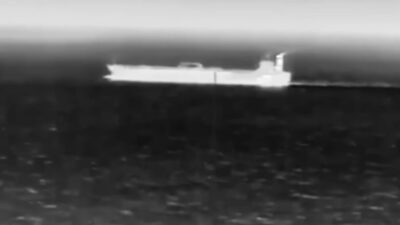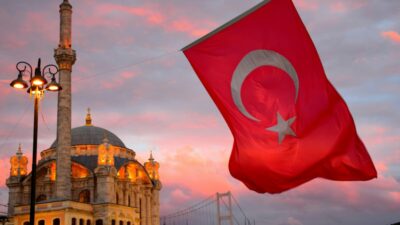Stavros Lygeros: Why the Erdogan regime is a break from, but also a continuation of Kemalism
15/01/2021
The slide of the neo-Ottoman current, expressed by the Justice and Development Party, towards the current authoritarian Erdogan regime is not a diversion. It is not the result of a historical accident. Although it undoubtedly constitutes a break in relation to the post-Kemal regime, at the same time it is a continuation of it, having as a common denominator the despotic character of the state.
Turkey carries in its gene the stigma that as a modern state it was created by officers, after a victorious war. In fact, the establishment of the Turkish Republic as a peculiar nation-state was then the only way to avoid the complete dissolution of the Ottoman Empire. Mustafa Kemal built the Turkish Republic in opposition to the Ottoman tradition.
However, never and nowhere, are traditional perceptions and ingrained mentalities abolished by decrees. He, after all, replaced the sultan in another form. The Kemalist regime may have heralded its secular character, but in essence, it was not only authoritarian but also idiosyncratically theocratic. The founder and leader became the “great father” of the Turks and then almost deified.
The traditional Ottoman doctrine of the powerful father-state not only survived in the Turkish Republic but also mutated and became informally the defining determinant of the Kemalist regime. As in the Ottoman Empire, so in the Turkish Republic, any modernizations were imposed in an authoritarian manner from above and often as a result of external influences and pressures. In fact, Turkey has never experienced a democratic revolution. Despotism survived mutated. Society remains largely subservient to a state that is neither its creation nor its origin.
Parliamentary democracy from above
Multiparty parliamentary democracy was imposed by the post-Kemalist regime itself in 1946, in order for Turkey to superficially adapt to the Western model. It was a precondition for geopolitically integrating into the West and later joining NATO. It is indicative that the Kemalist Republican People’s Party was founded by the state.
The newly formed parliament began and remained for decades controlled by the Kemalist establishment. This functioned as the owner of the state and as the guardian of the political system. Suleiman Demirel, repeatedly Prime Minister and President of the Republic, has acknowledged that “if we implement democracy as Europe demands of us, we will disintegrate as a state and we will not let that happen” (Cumhuriyet, 3-6-1995).
Kemalism had as its pillars nationalism, statehood, the secular character of the state (not in the sense of the separation of state and religion, but subjecting religion to state control), and the imposition of European standards on society in the name of turning to the West. In its evolution, Kemalism turned into something more than a state ideology. It took on the dimensions of “religion” because it was the cohesive link that united the state elites.
“One state, one language, one nation”
With the same ideology, the state mechanism tried to violently unite the racially colorful Ottoman Muslim populations of Asia Minor, based on the doctrine of “one state, one language, one nation”. Against the non-Muslim communities (Greeks, Armenians, and Jews), Ankara pursued a policy of ethnic cleansing. Typical examples are the persecutions of the Jews of Edirne and the Forty Churches in 1934, the extermination of the capital tax of Varlik Vergisi imposed on minorities in 1942, the expulsions of the Greeks in 1955 and 1964, the open prisons and rapes, etc.
The Turkish business class, due to the fact that it developed in an environment of intense statehood, has not been able to emancipate itself politically for decades. The group of officers who founded the Turkish Republic and later formed its permanent political leadership was the center of power.
Following Turkey’s entry into NATO and the establishment of a multi-party system, the military hierarchy was upgraded. On the one hand, it was the main interlocutor of the Americans, on the other hand, it remained the most autonomous, compact, and effective mechanism of power in a rather fluid social landscape. That is why its supervisory role has always been visible, permanent, and largely accepted by the parties. But it was not alone. It worked with the backbone of the state bureaucracy and had a significant impact on society.
Kemalism and political Islam
There were three coups in post-war Turkey (1960, 1971, and 1980) and one “semi-coup” (1997). Coups in Turkey were not like coups in other countries. The generals did not have to resort to conspiracies. Officers were expressed as a whole through their hierarchy. That is why the coups had the character of corrective interventions made by the informal but substantial guardian of the state.
In fact, the Kemalist military-bureaucratic complex was above the National Assembly. That is why, when it judged that the parties had exceeded their limits, it restored them to order or banned their operation and launched the creation of new parties. The cause of the coups was not only the defense of Kemalism but also the Cold War expediency of the Americans, who wanted Turkey a controlled geopolitical foothold in the soft underbelly of the then Soviet Union.
In an effort to create a Western-style nation-state, Kemal sought to neutralize Islam’s influence in the political arena and shrink it to a narrow religious context. His goal was to make a cut in relation to what was in force in the Ottoman Empire. The empire was built on the basis of religious identity, with the result that political Islam was completely institutionalized. It should be noted that the sultan was also the caliph, that is, the leader of the Muslims everywhere.
“Deep Turkey” and the Erdogan regime
Kemal’s motive, of course, was not purely ideological. It was also practically political, as the sheiks and the Islamic battalions functioned as informal mechanisms of power in Ottoman society and were, therefore, an obstacle to the new power. Superficially, the Kemalist regime achieved its goal. In reality, however, its ideological imposition remained on the surface.
“Deep Turkey” may have accepted Kemalism, but it did not mutate. The contradiction between Kemalism and “deep Turkey” produced a cultural-social gap visible to the naked eye. It was from this gap that the neo-Ottoman Justice and Development Party sprang. “Deep Turkey” was politically expressed by Erdogan and this ensured his consecutive electoral victories.
And when, of course, he won the informal civil war against the Kemalist military and overthrew the post-Kemalist regime, he repeated the same despotic pattern: he became a “neo-sultan”. The ideological sign and form may be very different, but in terms of the perception of power, Kemal was a continuation of the sultans and Erdogan a continuation of Kemal.





